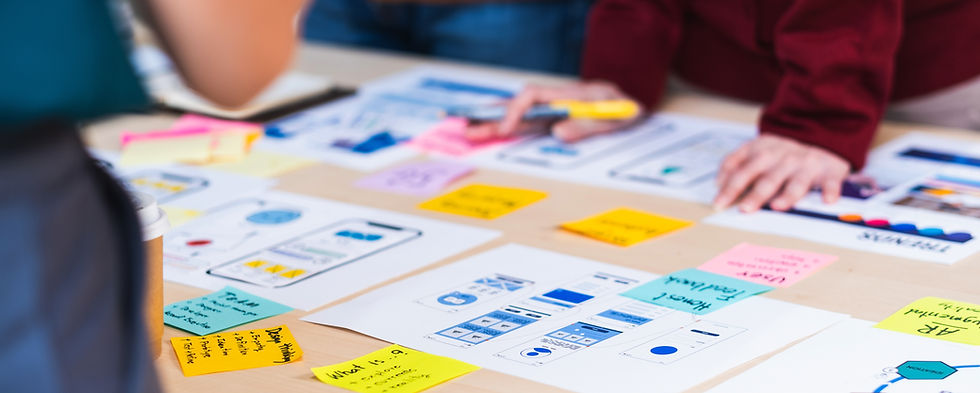Designing for Everyone: Why Accessibility and UX Go Hand in Hand
- Niyazi Makuloglu
- Jun 25
- 2 min read

When Sarah, a UX designer at a fast-growing startup, launched her team’s sleek new app, the reviews were glowing—except for one. A user with visual impairment reached out saying they couldn’t navigate the app at all. It was a wake-up call: beautiful doesn’t always mean usable for everyone.
This story isn’t unique. Many digital products focus heavily on aesthetics and interactivity, but overlook a crucial component—accessibility. At Dorutech Software, we believe great design isn’t just functional and elegant—it’s inclusive by default.
🧩 What Is Inclusive Design?
Inclusive design means creating digital experiences that work for as many people as possible, regardless of their abilities, environment, or device.
It involves considering:
People with visual, auditory, motor, or cognitive disabilities
Users in low-bandwidth areas or on older devices
Temporary impairments (like a broken arm or noisy commute)
Situational limitations (using your phone one-handed or in bright sunlight)
Designing with accessibility in mind isn't just a compliance checkbox—it’s a better way to build.
🎯 Core Accessibility Principles We Follow at Dorutech
Perceivable: Make content visible and understandable to all. This includes readable fonts, proper contrast, and text alternatives for images.
Operable: Interfaces must be navigable using a keyboard, voice control, or screen reader—not just a mouse or touchscreen.
Understandable: From clear navigation to predictable behavior, users should never be confused or overwhelmed.
Robust: Code must work across assistive technologies and future-proof platforms.
We integrate these principles into every project—whether we’re building a complex enterprise portal or a mobile-first ecommerce experience.
🛠 Tools & Techniques We Use
WCAG 2.1 compliance auditing
Semantic HTML and ARIA roles
Screen reader testing (NVDA, VoiceOver)
Keyboard-only navigation checks
Figma accessibility plugins for contrast and focus visibility
We also incorporate accessibility from the wireframing stage—not as an afterthought, but as a design constraint that drives innovation.
💡 Real-World Impact
By designing for accessibility, you're not just avoiding legal trouble—you’re expanding your audience and building brand trust.
Consider this:
A fully accessible website can reach over 1 billion people worldwide who live with some form of disability. That’s not a niche—it’s a massive opportunity.
We’ve seen clients improve bounce rates, time-on-page, and conversions simply by making their digital experiences more inclusive.
📎 Takeaways
Accessibility is usability. Designing for edge cases makes products better for everyone.
Inclusive design improves SEO, reach, and long-term product resilience.
Starting accessible saves time and money in the long run compared to retrofitting.
Want to make your product more accessible but don’t know where to start? Dorutech Software offers full-spectrum design services—from UX research to accessibility audits—to help you build better for everyone.



Comments